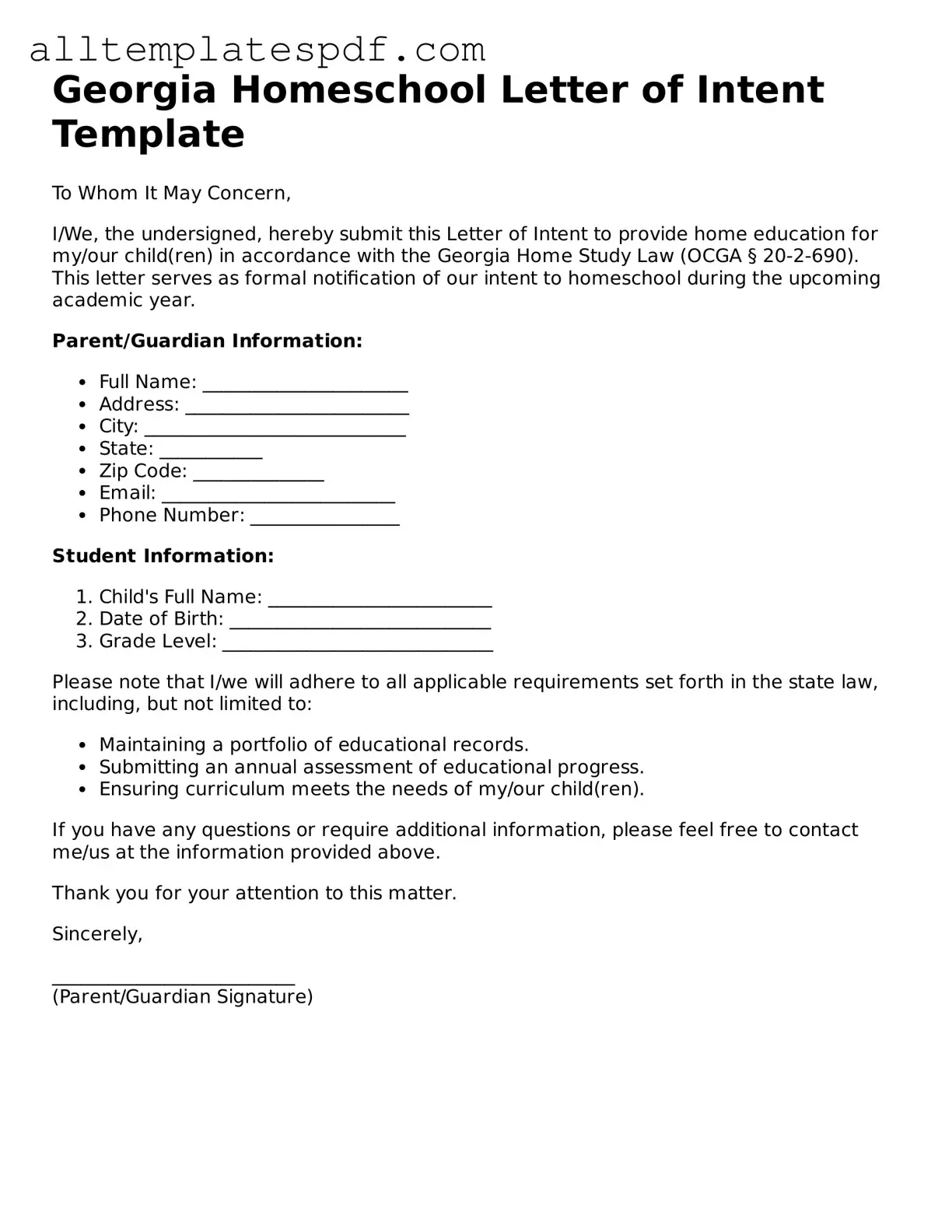Filling out the Georgia Homeschool Letter of Intent form is a crucial step for parents who wish to educate their children at home. However, several common mistakes can lead to delays or complications. One frequent error is failing to provide all required information. The form asks for specific details about the student and the educational plan. Omitting any of these details can result in the rejection of the application.
Another common mistake is incorrect or incomplete student information. Parents sometimes forget to include the full name, date of birth, or grade level of their child. This oversight can create confusion and may require additional communication with the local school district.
Some parents fail to sign and date the form. A signature is essential as it indicates the parent's commitment to homeschooling. Without a signature, the form is considered incomplete and cannot be processed.
Additionally, many people overlook the submission deadline. The state of Georgia has specific timelines for submitting the Letter of Intent. Missing these deadlines can lead to complications, including the inability to homeschool for that academic year.
Another mistake involves not keeping a copy of the submitted form. It is important for parents to retain a copy for their records. This can serve as proof of intent should any questions arise later.
Some parents also misunderstand the requirements for the educational plan. The form requires a brief description of the curriculum and educational approach. Failing to provide this information or being vague can lead to issues with the local school district.
In addition, individuals sometimes forget to update the form when there are changes. If a child moves to a new grade or if there are changes in the educational plan, parents must notify the school district. Neglecting to do so can create misunderstandings about the child’s educational status.
Lastly, a lack of awareness about local regulations can lead to problems. Each school district may have specific requirements regarding homeschooling. Parents should familiarize themselves with these regulations to ensure compliance and avoid potential issues.
